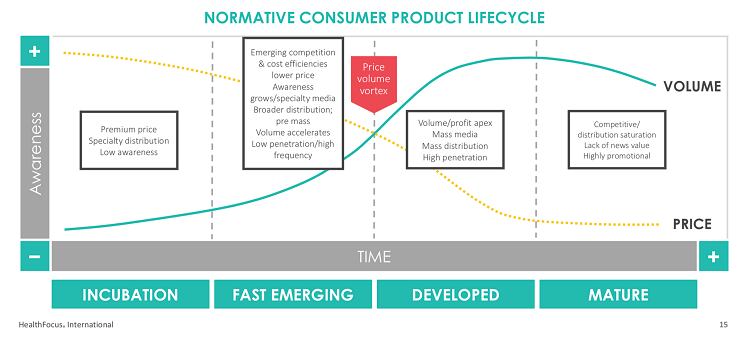Last year, consumer research firm HealthFocus International developed its proprietary wellness consumer segmentation tool and split US consumers into four categories according to how they adopt health and nutrition trends and integrate products into their lives. The four segments – lighthouse, converts, mainstreamers and followers – were developed using algorithms based on consumer behavior and attitudes from a 2,000+ survey to enable trend predictions and assist growth strategies.
From 'highly experimental' to 'last onboard'
According to the recent HealthFocus International webinar, 'lighthouse' consumers were “highly experimental” and always the “first to try” products, making up an estimated 8% of the American population. Members of this group were self-considered opinion leaders whose purchases represented social prestige and their number one purchase driver was quality ingredients, significantly more important than price.
The 'converts' group were consumers willing to trial products that often led to a “high level of repeat purchases and loyalty” and tended to be “higher than average” in terms of experimentation, making up an estimated 16% of the population. This group were the most active healthy snackers, eating little and often throughout the day, and higher protein was their number one purchase driver.
'Mainstreamers' were those who showed “good repeat purchases” once they trialed a product but this group was the “least accepting of science and technology” in food and beverages, making up 34% of the US population. This group had the least adherence to a fixed dietary regime, although the majority often selected food and beverage products with health in mind and their number one purchase driver was better taste.
The 'followers' group were the “last onboard” to latest wellness trends, though more than half selected food and beverage products for health, and this group made up 41% of the population. This group placed great importance on mental and emotional wellbeing when considering health and their number one brand driver was price.
Nutrition's commercial sweet spot?
Steve Walton, president of HealthFocus International, said these consumer segmentations were important for industry to understand and consider, and could be leveraged by both established and startup brands.
“In order to understand consumers' core motivations and drivers and connect with them to help motivate behavior, it is essential to understand not who they are but more importantly what they believe, think and feel,” Walton told NutraIngredients-USA.

Companies should avoid labeling consumers—vegan or vegetarian being two good examples—he said, and instead build products that fitted behaviors and predispositions.
“Target your consumer, not based on demographics or even usage, but on attitudes, beliefs, ability to act and on core motivations (…) Look both at the things wanted but also spend time on overcoming claimed barriers – these are often just excuses not to act and, if real, can often be easily overcome.”
Knowing this for each segmented group, Walton said, enabled “targeted concept research” to establish if a trend or product would be mass or niche and whether it would emerge strong or die off quickly. It also gave older brands the tools to “reinvigorate” and “capture new generations of users,” he said.
Asked which of the four consumer segments was most important for the US nutrition industry, he said: “The sweet spot is fast emerging (converts) and developed (mainstreamers) for growth and margin.”
This commercial sweet spot between the two groups, he said, was where volume and price importance met and therefore where most money could be made.
While the mainstreamers and followers were the largest groups, he said followers tended to be associated with lower margins and lower loyalty as they were “highly promotionally driven.” 'Lighthouse' consumers or the early adopters were also often too early for many brands, he said, although this segment was “where the big ideas start.”

'The old ways are changing...'
Walton said America's consumer market was “changing dramatically” in terms of where and how products were researched and bought, as well as how consumers related to these products and brands, and so industry had to respond.
“It is not always about the new ingredient or the new trend, it is about something bigger; our relationship to what we eat, our health, and our value systems. The old ways are changing. I fear that those who resist competing with themselves in sometimes creative destruction may continue to experience impediments to growth,” he said.





